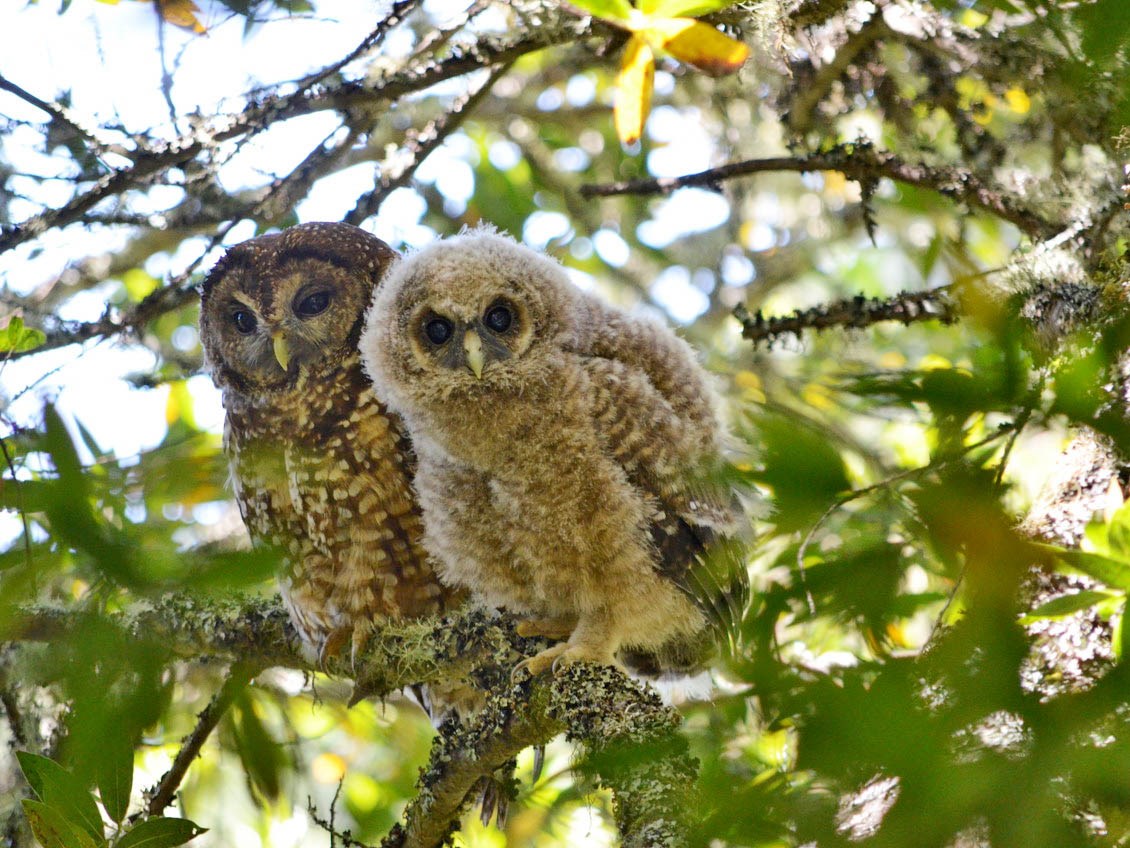Last updated: June 29, 2018
Article
Marin Spotted Owls Buffered From Barred Owl Invasion

NPS / Taylor Ellis
June 2018 - Did you know that Marin County and Point Reyes National Seashore could be essential refuges for the northern spotted owl subspecies in coming years? In forests farther north, the eastern barred owl has moved down the coast and invaded historic spotted owl territories. The pattern has been near-complete replacement: the slightly larger barred owls push the spotted owls to the margins of their territories, where they stop nesting and reproducing. In this way, spotted owls have largely disappeared from high-quality habitat, such as the old-growth forests of Olympic and Redwood National Parks. The invasion has been fast: barred owls were first seen in northern British Columbia in 1949, then Washington in 1969, and Oregon in 1979. The first barred owl was detected in northern California in 1985, and Marin county in 2002. Marin is the southern limit of their range expansion along the western coast at this point.
Fortunately, the unique geography of Point Reyes and its neighboring ranch lands have likely slowed the influx of barred owls to the forests of Marin county. Point Reyes forests are surrounded by open, rolling hills, interspersed with only the occasional oak tree. This physically separates them from the coniferous forests that stretch relatively unbroken from Sonoma County into British Columbia and beyond. It isn't impossible for barred owls to cross this terrain, but it's unusual. Only a few barred owls have been found in northern spotted owl territories at Point Reyes so far.
Likely because of this open space separating Marin’s forests from those farther north, barred owls in Marin County have not “taken hold” to the extent of exhibiting the exponential growth pattern seen in more northern barred owl populations. Geographic isolation, combined with barred owl management in the future, could mean the continued survival of Marin’s spotted owl population. While it may be too late to restore many spotted owl populations in areas farther north, the Marin population may soon become the last sizable, wild population of northern spotted owls.
National Park Service biologists monitor territory occupancy and nesting success for this very special population, and also keep tabs on barred owl populations. They have good news: thus far, 2018 has been another solid year for northern spotted owl reproduction. After a few years of below average reproduction during the drought, the owls remain at high occupancy levels and have had an above average number of nests and young in 2017 and 2018. There appear to be more subadult owls occupying the territories this year, which might be expected given the high number of fledglings last year. The subadults are filling the gaps in occupancy that had started to develop during the drought.
Contact Taylor Ellis for more information.
